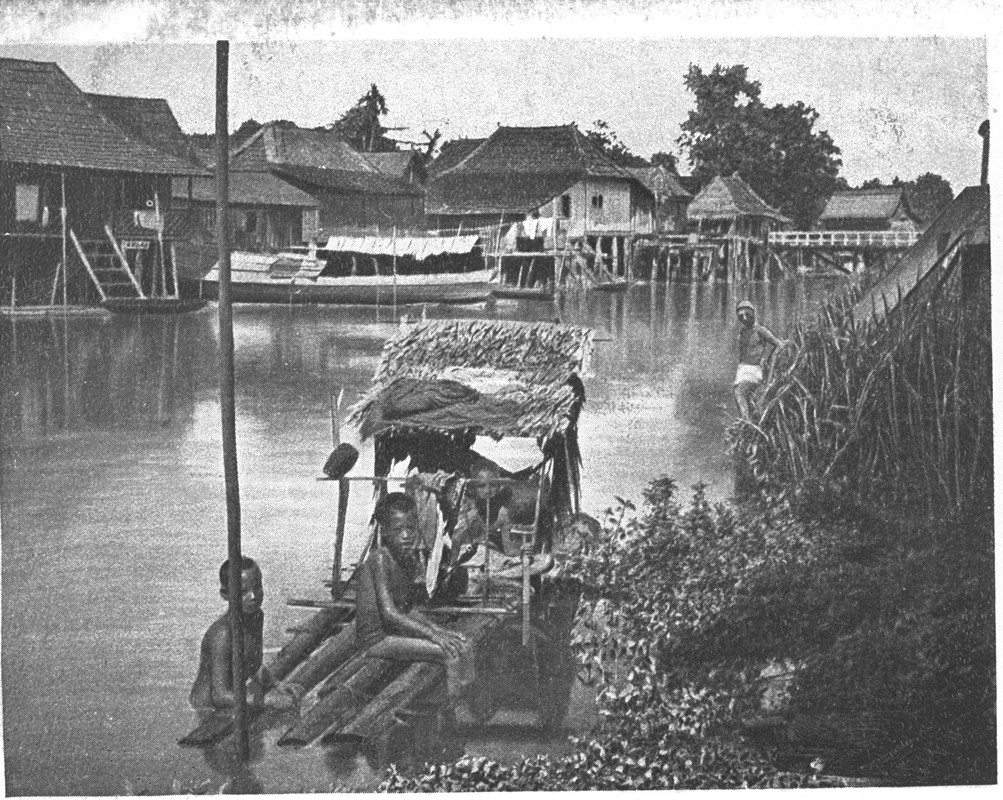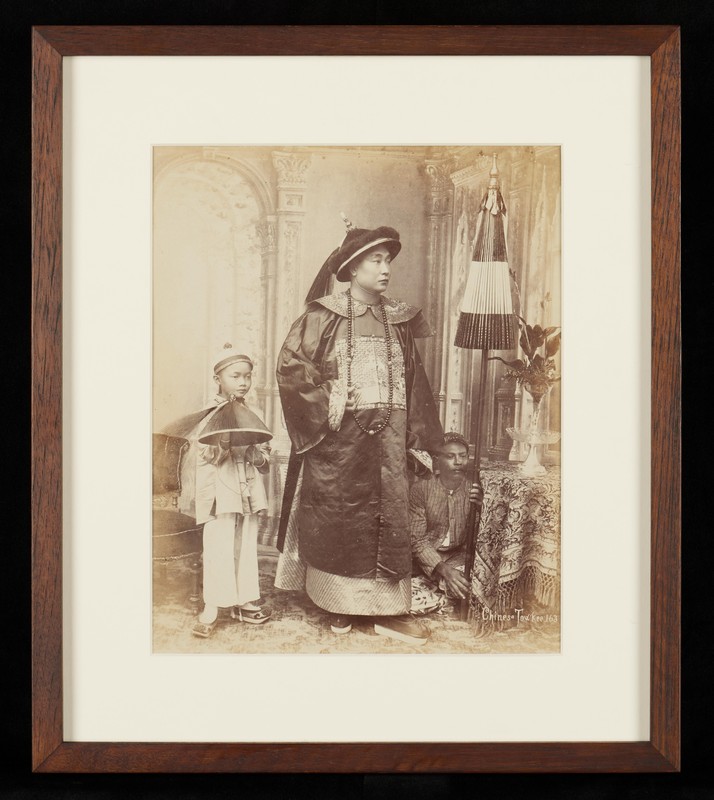Schools founded by Cantonese in Singapore
Besides Kwong Wai Siew Peck San Theng cemetery and the Kwong Wai Shiu Hospital, schools were another major charitable contribution of early immigrants from the Canton prefectures of Guangzhou, Huizhou, and Zhaoqing. In the early 20th century, the Singapore Cantonese community raised funds for the establishment of Yeung Ching School (1905–), Kwong Fook School (1916–1982), Nan Hwa Girls’ School (1917–), Cheng Fong Girls’ School (1928–1942), Kwong Wai Shiu Peck Shan Ting School (1936–1981), Shut Yung School, and Khe Chee School. The clan associations set up by the Cantonese community also offered free education. Local clan associations that established education arms included Ning Yeung Wui Kuan (1906–late 1950s), Tung On Wui Kun (1923–1964), Kong Chow Wui Koon (1929–1968), Nam Sun Wui Kun (1931–1968), Sam Sui Wui Kun (c. 1933–1960), and Poon Yue Association (1952–1958).1
Community effort
Yeung Ching School (now Yangzheng Primary School) was the first and the largest school founded by the Cantonese. First known as Kwong Shiu School, it was established in Park Road, Chinatown in 1905 with contributions from 27 Chinese merchants, including Wong Ah Fook (1837–1918), Yow Ngan Pan (1863–1930), Look Yan Kit (1849–1933), and Ho Siak Kuan (1866–1947). Among its famous alumni are Chinese composer Sinn Sing Hoi (1905–1945) and Indonesian Chinese artist Lee Man Fong (1913–1988).

In 1906, Kwong Shiu School was renamed Kwong Shiu Yeung Ching School. Hakkas from Huizhou joined in to manage the school in 1907. It was renamed Kwong Wai Shiu Yeung Ching School, and subsequently Yeung Ching School in 1912.2 In the early years of Yeung Ching School, enrolment numbers increased rapidly and school funds ran low. Most of the Chinese students back then came from low-income families, and some could not even afford the school fees. Seeking to address these issues, the school’s board of directors decided to develop the land at the junction of Maxwell Road and Peck Seah Street, where Cheng San Teng cemetery used to be. The colonial government had previously gained possession of the cemetery land to develop the Chinatown area, but in 1924 gave part of the land back to the Cantonese and Hakkas who had been seeking as compensation. This allowed the Kwong Wai Shiu community to open Air View Restaurant and New Asia Hotel (now part of Air View Building) there, and collect rent to fund Yeung Ching School and Kwong Wai Shiu Hospital.3 The Hakka then established Singapore Khek Community Guild (now Nanyang Hakka Federation) next to the Air View Building.
Education for girls
The establishment of both Nan Hwa Girls’ School (now Nan Hua Primary School and Nan Hua High School) and Cheng Fong Girls’ School was largely the result of the socio-political environment in the early 20th century, where girls were encouraged to attend school. Besides the Cantonese community, other non-Cantonese pioneers such as Tan Kah Kee (1874–1961), brothers Aw Boon Haw (1882–1954) and Aw Boon Par (1888–1944), Lim Peng Siang (1873–1944), and Lim Nee Soon (1879–1936) also contributed to the establishment of Nan Hwa Girls’ School. Even Chui Lok Amateur Dramatic Association from Kuala Lumpur travelled to Singapore to stage a charity performance at Lai Chun Yuen Opera House in Chinatown to raise funds for the school — reinforcing the kinship between Singapore and Malaya.4There were two other girls’ schools in Singapore back then, namely Singapore Nanyang Girls’ School (now Nanyang Girls’ High School, 1917–) and Chung Hwa Girls’ School (now Zhonghua Secondary School, 1911–).
Cheng Fong Girls’ School, which ceased operations during the Japanese Occupation, had started as a branch for the female students of Yeung Ching School. At the time, the colonial government mandated that students above the age of 12 had to enrol in single-sex schools, as was the norm in Britain (this policy was changed only after World War II).5 Cheng Fong Girls’ School was also a school for trainee teachers.

Village and town schools
Kwong Fook School was a Chinese school funded by a temple. Most of its students were children of the people who worked in the Kallang Gasworks area (huocheng, or literally “districts of the fire”)6 — one might call it a school for workers’ children. Back then, students did not have high aspirations when it came to education — they only wanted to learn to read, write, and acquire skills that would help them make a living. When Kwong Fook School was founded, Yeung Ching School gave it some of its old tables and chairs, and classes were conducted on the opera stage of Kwong Fook Temple. The school’s board of directors used the cash offerings made to the temple, as well as rental income from properties, to fund the school’s operations. In 1956, a new school with 14 classrooms was built and incorporated into the national education system to become a government-aided school. Nonetheless, Kwong Fook Temple continued to fund the school’s miscellaneous expenses.

Kwong Wai Shiu Peck Shan Ting School, an independent school offering free education to residents from Kampong San Teng and Shunfu Village,7 was located beside the Peck San Theng cemetery. The cemetery, located on the site of present-day Bishan town, was managed by a federation of Cantonese clans. Funds from the “Grand Universal Salvation Ritual” prayer service for the deceased and other donations were used to build the school.
Funds for the other schools established by Cantonese clan associations in densely populated Chinatown, such as Ning Yeung, Tung On, Kong Chow, Nam Sun, Sam Sui, and Poon Yue as mentioned above, were collected by clan associations from clan members. These schools faced competition from other non-clan private schools in the early years. After Singapore gained self-governance, these Chinese-language medium clan schools faced low enrolment, and eventually closed in the 1960s.
Today, there are still schools which retain their historical ties to the Cantonese community and continue to have Cantonese leadership on their advisory committees. Among them are Nan Hua High School, Nan Hua Primary School, and Yangzheng Primary School.
This is an edited and translated version of 新加坡广东人的学校. Click here to read original piece.
| 1 | Lee Kok Leong, Dayanji, yueyangren, 254. |
| 2 | Ho Nai Kiong, Qian Yangzheng jishi 1905–1987, 17–19. |
| 3 | Ho Nai Kiong, “Yangzheng yu tian yi jing”, Lianhe Zaobao, 17 August 2015. |
| 4 | Sin Kuo Min Press (later known as Sin Kok Min Jit Pao), 22 July 1926. |
| 5 | Ross McKibbin, Classes and Cultures, England 1918–1951 (Oxford: Oxford University Press, 1998), 247. |
| 6 | This generally refers to the Kallang area. There used to be a liquified petroleum gas factory, Kallang Gasworks, beside Kallang River. It was the biggest in Southeast Asia. |
| 7 | Lee Kok Leong, ed., Bishan ting lishi yu wenwu (Singapore: Singapore Kwong Wai Siew Peck San Theng, 2019), 30–34. |
Lee, Kok Leong. Dayanji, yueyangren [Breaking the Waves]. Singapore: Traveler Palm Creations, 2017. | |
Ho, Nai Kiong. Qian Yangzheng jishi 1905–1987 [Former Yeung Ching Chronicle]. Singapore: Yang Cheng Alumni Association, 2017. |










